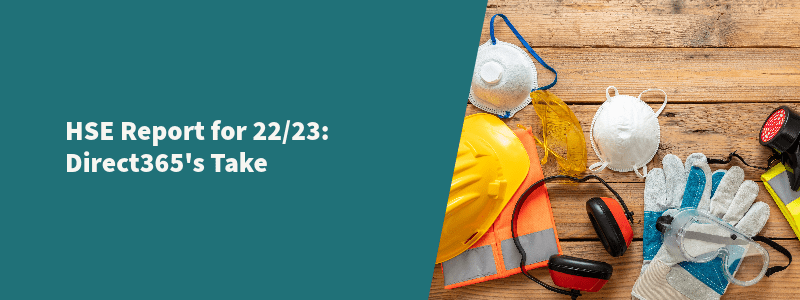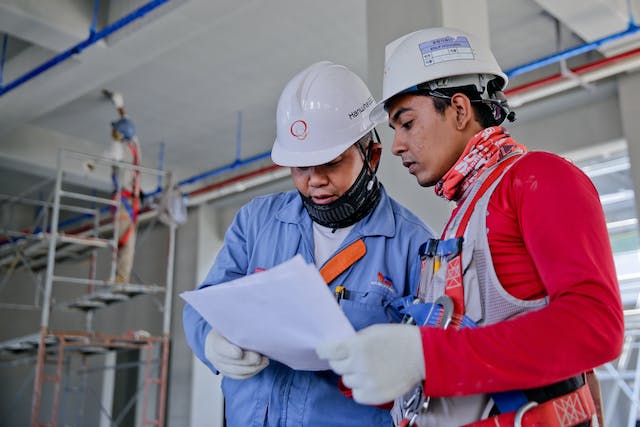Each year, the Health and Safety Executive (HSE) release their findings on workplace sickness. Last week, the latest edition was released, and we’ve taken a look to give you a summary based on some of the more interesting findings that caught our eyes. But what do we think of the HSE report?
Workplace safety is important for a couple of major reasons. Firstly, for the actual health of your employees. Employees both legally and morally deserve to work in an environment that is safe and secure. Secondly, ill-health and unsafe practices cost money. Both in productivity from the businesses perspective, and financial from society’s perspective. Both are important and both can only really work with minimal issues with the other one in hand too.
One reason that the HSE document is interesting is that it shows the trajectory and trends of the recent past. It can help with finding any concerning findings. They also offer a breakdown between each industry, which in turn focuses attention on who exactly needs to ensure higher levels of sickness and safety vigilance.
Workplace Injury
The Health and Safety at Work statistics pack is released each year, and focuses on a number a number of key topics. One of the main topics we are focusing on here is the workplace injury category. Some of the big numbers come in this category, which are also linked to the financial costs of work-related illness and injury.
Firstly, last year there were 561,000 non-fatal workplace injuries. This is clearly a large figure, but one of the more interesting figures is that 22% of those injuries were listen as having over 7 days of absence. So over 1 in 5 injuries meant someone was off for over a working week. Clearly, some of the most serious.
That figure amounts to 124,000 people, with the total 561,000 adding up to over 3.7 million lost workdays in 2022/2023.
The most common injury by far is from a slip, trip or fall with 32% of the injuries. Second most frequent injury comes from manual handling/lifting injuries with 17%. These together make up nearly 50% of injuries reported by employers. This shows us an opportunity to reduce these figures with greater vigilance from fellow employees in policing themselves. Be this through training or greater awareness. There is clear potential to improve, even slightly.
What’s the cost?
The cost to Britain is major. In relative terms, British workers are much less likely to be fatally injured than most European counterparts. With just 0.61 incidents per 100,000 people, it is second to only Germany (0.55). In this sense, Britain is a safe place to work. But the workday injuries are ones that cost a business financially.
For non-fatal injuries and illness, the UK has 1 and 3.3 per 100,000 people respectively. These figures in total cost Britain £13.1 billion per year. Our economy suffers even though we have relatively low injury, fatality and sickness rates. Ill health is responsible for 63% of the cost of workplace illness/injury. The breakdown of that, according to the HSE, is a cost of £4.6 billion to the government, £3.9 million to the employer and a whopping £12.2 billion to the individuals involved.
How This Impacts Industry
Sickness and injury impacts the individual most. It both impacts their health and has an effect on their wallet too. But which industries do sickness and injury come from? The HSE report has some interesting findings.
Firstly, the sector most likely to find workers off unwell should be no surprise. The healthcare sector has around 7,000 worker off sick per 100,000 each year. A huge spike when compared to other industries, but because they themselves deal with sick people, it’s no real surprise.
Third in that list is education. Again, no real surprise when you consider that educators are dealing with hundreds of people a week and often expected to work long hours.
One of the most surprising stats is that out of all industries in the survey, manufacturing and construction (both -4000 per 100,000) find themselves towards the bottom of the pack of work related sickness and injury. This is likely because of the dedicated and strict rules around injury in the workplace and safety that protects these workers. These rules clearly work.
The findings here show that Britain has a good level of protection against sickness and injury, and while the cost figures are high, this is less of an impact on the direct economy than it is the individuals themselves.
For further details on the HSE report, find the report here.
Direct365 are the small business experts. Our products and service are aimed towards taking the pain out of compliance-based activities. For further details on Direct365, check out our website here.
Back

